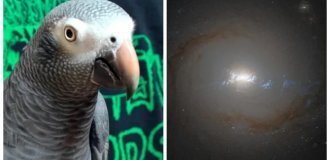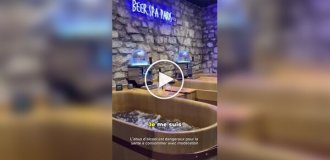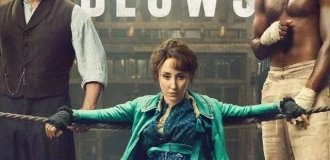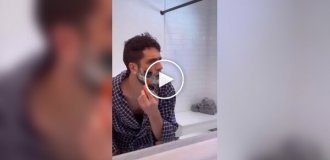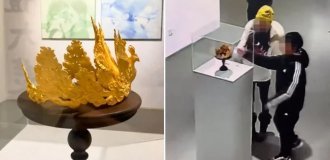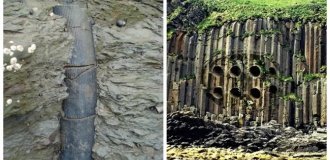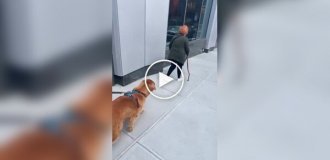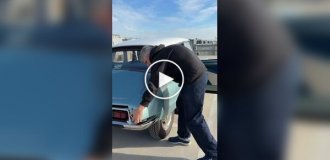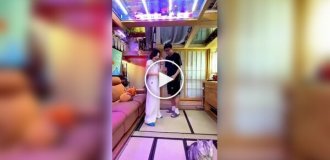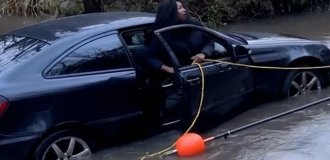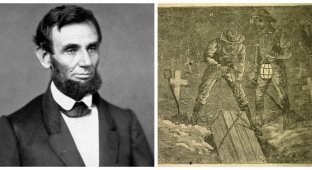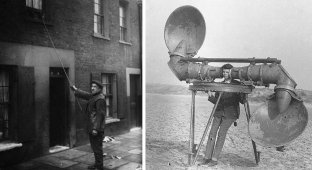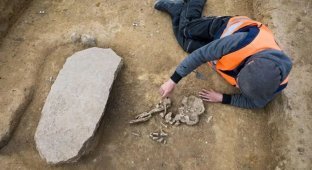Timid and creative Henry Trigg and a coffin on the roof (9 photos)
For centuries, doctors and scientists have dissected human bodies to understand human anatomy, and executions have often been a constant source of information. 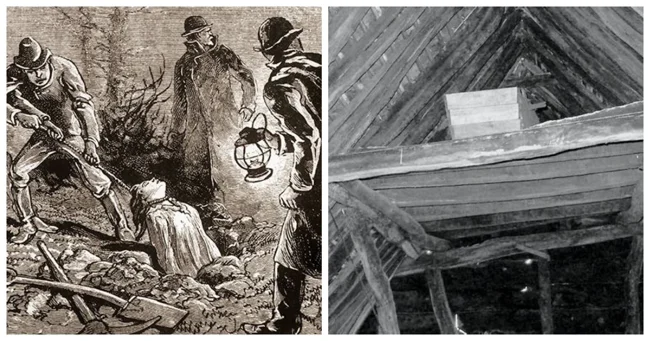
In medieval times, many people were executed for even minor crimes, which provided medical and surgical students with constant access to corpses. But as justice methods relaxed and executions became less common, medical schools began to experience a severe shortage of bodies. This shortage gave rise to "resurrectionists" - grave robbers who dug up freshly buried corpses to sell to anatomy schools. 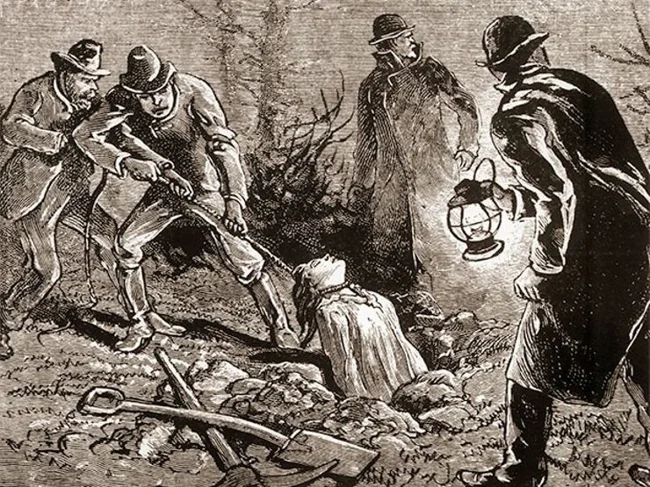
In response, cemeteries took extreme measures: they hired guards, set traps, and even enclosed graves in cages to thwart would-be body snatchers. Others temporarily housed bodies in "dead man's houses" until decomposition made them unusable for thieves.
One man, Henry Trigg, developed an unconventional method for protecting his own body from theft. 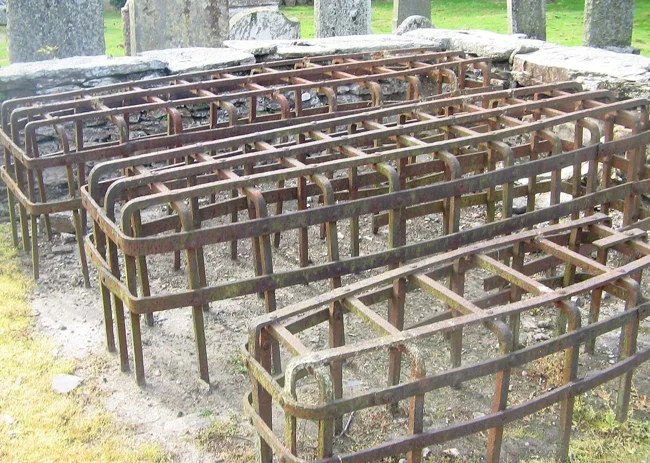
These bars were used to protect graves from looting
Henry Trigg lived in the early 18th century in Stevenage, a small town in Hertfordshire, England. A successful grocer, he owned several shops and properties around the town and was respected by locals as the warden of St. Nicholas Church and a parish beadle.
The story goes that one evening, after drinking at a tavern, Henry and his friends were heading home along a road that passed by the churchyard. As they passed the headstones, they saw some body snatchers at work, removing the remains of a freshly buried corpse to sell to surgeons and medical school students. The sight disturbed Henry so much that he became determined to prevent a similar fate. 
Trigg's coffin in 2016
Determined, Henry wrote a will asking that his body be placed in a coffin and, instead of being buried in a churchyard, placed on the purlins and rafters of his barn. Henry added that his body should remain there for at least thirty years, after which he believed he would rise from the dead and reclaim his estate. Henry even asked that the barn doors be locked from the inside and the key placed in the coffin so that he could let himself out. However, one wonders who exactly locked the barn door if Henry was to remain inside alone. 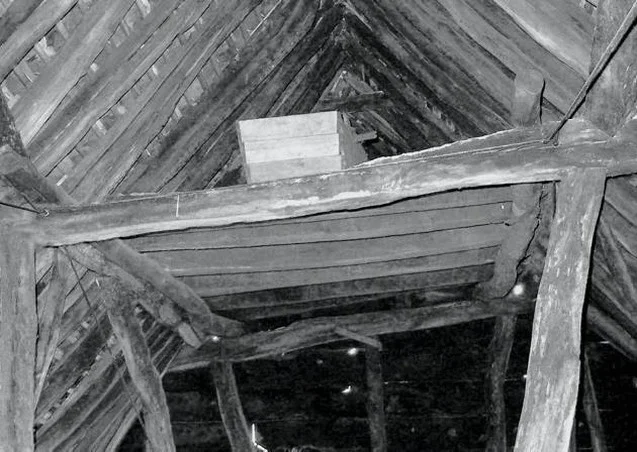
Henry died in 1724, probably only a few years after making his unusual will. Having never married and having no direct heirs, he left his entire estate to his brother, the Reverend Thomas Trigg, who was tasked with carrying out Henry's final wishes. Henry was aware of the peculiarity of the request he had made in his will. Fearing that his brother would not carry it out, Henry had included a provision in his will that his brother would be disinherited entirely if his request was not carried out. Instead, everything bequeathed to him would go to their brother George Trigg. If George also refused, the inheritance would go to Trigg's nephew William Trigg, and so on. 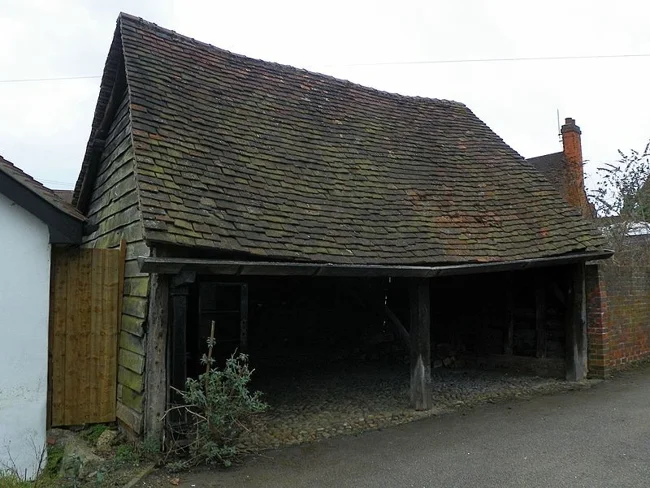
The barn in 2016
Thomas had apparently carried out his brother's peculiar wish. Henry's body was placed in a lead-lined coffin, which was then raised into the rafters of his barn, about three metres above ground level. The unusual 'burial' soon attracted curious onlookers and became a popular sight in Stevenage. When the house was converted into the Old Castle Inn in 1774, the coffin continued to attract visitors, even after Trigg's niece, Anne, later requested that her uncle's remains be moved to the churchyard. However, the new owners of the inn chose to ignore Anne's wishes, leaving Henry's bones in the barn rafters to continue to attract visitors and fuel local lore. 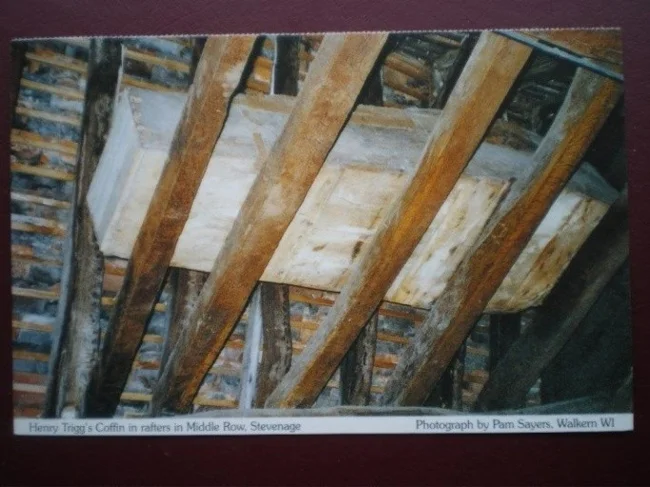
Although the barn and coffin survived several devastating fires over the years, Henry Trigg's plan to preserve his remains ultimately failed. Curious visitors began to steal parts of the remains as souvenirs whenever they could. When the coffin was replaced in the early 1800s, damaged by years of exposure, the carpenter reportedly took one of Henry's teeth and a lock of his hair as souvenirs. In 1831, an innkeeper named Bellamy opened the coffin and noted that the hair on Henry's skull was "in perfect preservation." By the time the Archaeological Society examined the remains in 1906, they estimated that at least a third of the skeleton was missing. 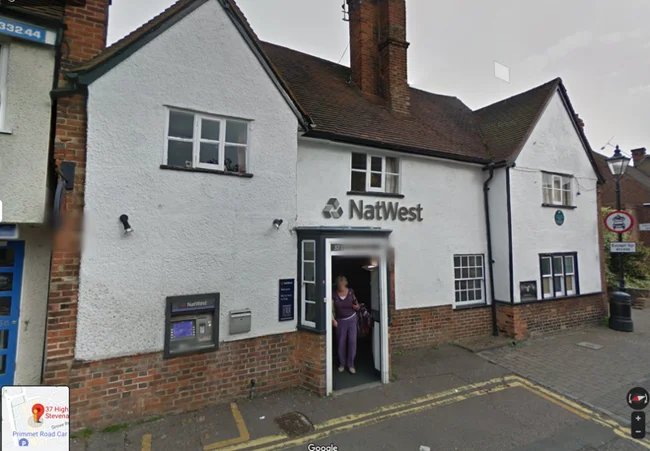
Further looting occurred during the First World War, when soldiers stationed in Stevenage allegedly removed the bones from the coffin, replacing them with horse bones. In 1999, Henry's property, including the barn, was purchased by the National Westminster Bank, and the coffin was temporarily moved to an undertaker while repairs were made. Accounts of what happened next vary, with some claiming the coffin was found empty after removal, while others say the undertaker found a haphazard jumble of animal bones and arranged for them to be buried. Whatever the case, it is clear that poor Henry met a most unworthy end. 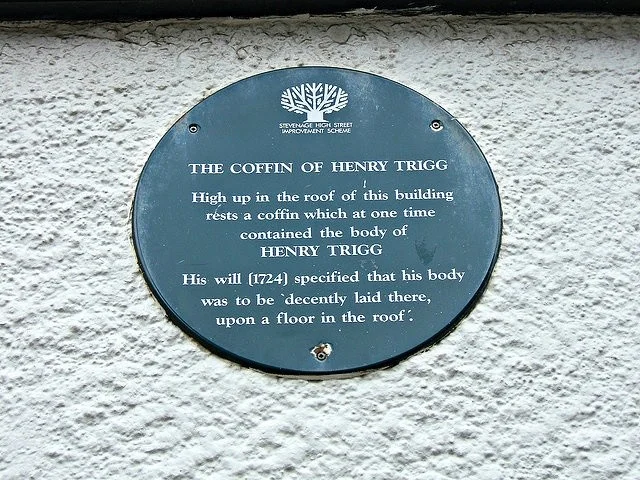
Today, the shop and barn still stand in Middle Row, and Henry's empty coffin still rests in the rafters.
Legend has it that his restless ghost roams the buildings, searching for lost remains. He was last seen in 1964, when he allegedly walked through a brick wall.
